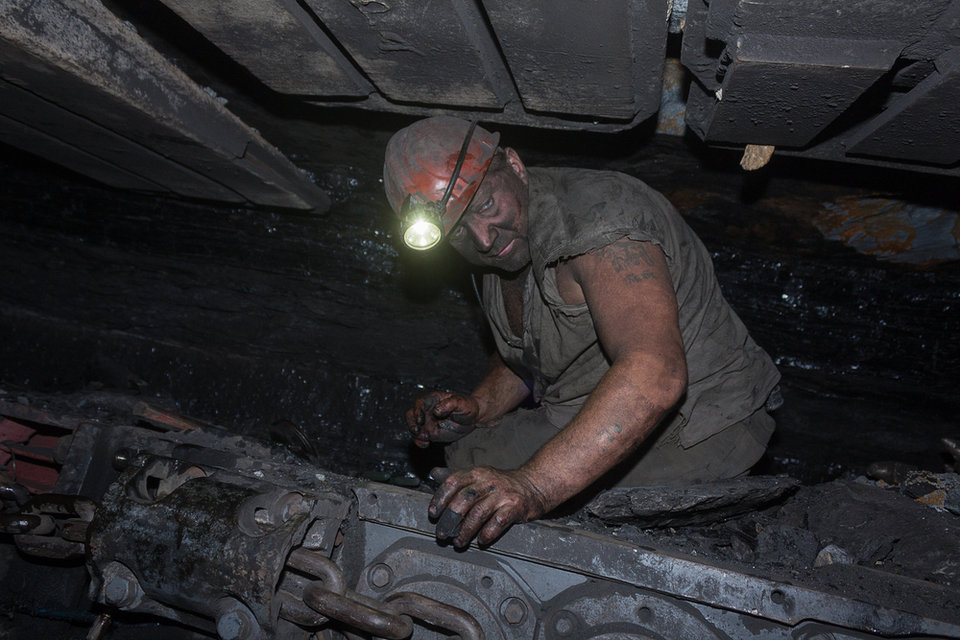Could 5G be the key to unlocking autonomy in deep mines?
Volvo Construction Equipment is partnering with mobile operator Telia to pilot 5G mobile tech, giving mining an exponential boost in data transfer capabilities. How promising is that extra G and could it unlock the next generation of autonomous vehicles? Molly Lempriere finds out.
Scroll down to read the article
Over the last few years, automation in the mining sector has boomed. In particular, automated trucks, which allow efficient haulage almost 24/7, are now a common sight in the mines of Rio Tinto, BHP and others. Secure, reliable communication with these devices is essential to avoid accidents, as well as to monitor and manage the site.
At the 5G World Congress in London, Swedish mobile provider Telia announced its 5G Partnership Program. It will bring together the experience of Volvo Construction Equipment (Volvo CE), Ericsson and Telia to advance 5G networks for mine sites through a series of tests.
"We are extremely pleased that Volvo CE has joined the partner program, being the first company to do so,” said Telia Sweden chief technology officer Mats Lundbäck. “Telia will contribute with our experience in mobile technology, business development and in building everything from connectivity to complete solutions.”
While many mine sites already use a combination of WiFi and 4G, what are the benefits of switching to 5G?
Building on collaboration
This is not the first time Telia has teamed up with Volvo CE and Ericsson. The recent Pilot for Industrial Mobile communication in Mining (PIMM) project brought together a number of companies including ABB, Atlas Copco, Boliden, Ericsson, InfoVista, RISE, Telia, Volvo CE and Wolfit to develop 5G mobile communication for mine sites.
Over a period of two years, PIMM ran a number of tests at Boliden’s Kankberg underground mine in Sweden. During the project, Volvo CE successfully developed and trialled a remote-controlled wheel loader, which could be operated from an office on the surface, 400m above the machine.
“Volvo CE’s mission statement for the project was to prove that the technology we’re developing internally is applicable in a customer environment,” said Volvo’s advanced engineering programme leader Erik Uhlin. “We wanted to highlight that industrial applications in mobile networks aren’t just something out of science fiction – they’re real.
"Testing was carried out while production was taking place and that was demanding – but it meant that we were working with real problems, in a real environment. The project was a great success. The collaboration between all the partners resulted in us showcasing that a future underground mine could not only be more efficient, but also safer.”
The 5G Partnership Program will allow the companies to build on the successes of this collaboration. For Volvo CE this will include “pushing the boundaries for autonomous machines and developing site solutions that increase safety, productivity and uptime”, according to a statement.
The programme will use Telia’s test site in Eskilstuna, Sweden, over a two-year period. The successful application of 5G technologies in mine sites would bring improvements in safety and productivity. For example, following rock blasting, companies would no longer have to wait several hours to allow the space to ventilate before an operator can enter. Instead, it could simply send in autonomous vehicles and machines, controlled from a safe location by operators using secure, real-time connections.
"The benefits in terms of speed that 5G brings a big step forward for us,” says Volvo CE's senior vice president of technology, Patrik Lundblad. “Within our industry, there is a great potential for processing mobile data and learning how our machines can communicate and interact.”
The successful application of 5G technologies in mine sites would bring improvements in safety and productivity.

Volvo centre in Eskilstuna
Credit: Roman Korotkov / Shutterstock.com
Mining companies are the actual pioneers when it comes to autonomous vehicles and private LTE network deployments.
5G: what does the extra G do?
It is perhaps unsurprising then that many mobile companies have been pursuing a new, faster version: 5G. The ‘G’ stands for generation, and each iteration has brought new capabilities. In the 1990s, 1G enabled wireless phone technology; following this 2G supported the sending of text message; 3G allowed users to browse the internet.
4G long term evolution (LTE) is now the standard for industrial uses, and has brought speeds fast enough for real-time information and location sharing. This speed has made it attractive to mining companies in their effort to embrace autonomous technologies.
"Mining companies are the actual pioneers when it comes to autonomous vehicles and private LTE network deployments," said ABI Research senior analyst Lian Jye Su in 2017. "BHP, Fortescue, and Rio Tinto are currently running autonomous haulage and drilling in their iron ore mines. We believe the mining sector will be aggressive in deploying wireless technologies and this deserves the attention of LTE vendors and service providers. Aside from connectivity, they can offer value-added services, such as big data analytics, network security and edge computing."
But as autonomous fleets expand in size and the number of connected devices at mine sites increase, more will be needed. This is where 5G comes in.
Currently, standard 4G LTE transfer speeds are about 1GB per second. 5G will increase this to closer to 10GB per second. For a consumer, that would mean a full HD movie could be downloaded in a matter of seconds. For a mine site, it would improve the transfer of real-time information between a host of devices.
More than half of the country’s coal mines are managed by pro-Russian separatist militia. Credit: DmyTo/Shutterstock.

Getting a head start
“5G allows us to transport data in ways that we could only ever dream about and can increase the possibilities for autonomous and remote-controlled machines in our future,” said Volvo CE’s technical specialist for connected machines Calle Skillsäter.
Mine sites have traditionally struggled with connectivity for a number of reasons, the most obvious being thick walls, ceilings and floors which can seriously reduce the ability of a signal to provide a secure connection between operators and vehicles. Furthermore, underground mines can stretch for miles in all directions, making it harder for signals to travel between devices.
This is a problem Volvo is well-versed in, having developed the first self-driving truck for underground mines in 2016. “This is the world’s first fully self-driving truck to operate under such tough conditions,” said Torbjörn Holmström, member of the Volvo Group executive board and Volvo Group chief technology officer. “It is a true challenge to ensure that everything works meticulously more than 1,300 metres underground.”
A 5G network running through a mine site will increase bandwidth, reducing latency and improving reliability. It is also eagerly anticipated outside of the industrial space, bringing faster speeds to consumers worldwide.
It will still be a while before 5G becomes available to the general public, but through projects such as the 5G Partnership Program it seems that mining will be ahead of the curve and ready to reap the rewards.
“By eliminating the potential safety hazards and downtime associated with operations like mining, we can move closer to fulfilling our ambitions to deliver zero emissions, zero accidents and zero unplanned stops,” said Skillsäter.
A 5G network running through a mine site will increase bandwidth, reducing latency and improving reliability.